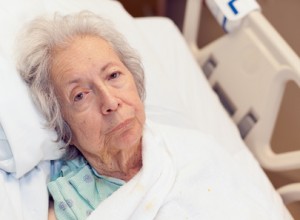Hospitals are places of recuperation, and sleep is essential to recuperation. But hospitals can be very, very noisy places. Patients have criticized the clatter for years, but the alerts emitted by all of the various alarms, whistles and buzzers have typically been deemed by hospital administrators to be more important overall.
That attitude has been changing though with a greater focus on patients, new policies linking hospital reimbursement to patient satisfaction, and more research on the effects of a noisy hospital environment.
In this article in the New York Times, Pauline W. Chen, M.D., says that patients endure a level of noise that “borders occasionally on deafening.” A recent study found that average noise levels in a hospital room way outstripped the recommended 30 decibels (slightly louder than a whisper) that is recommended by the World Health Organization. Meanwhile, peak noise levels were sometimes as loud as a chain saw! The more noise, the more of a negative impact on patients’ sleep. And the less sleep, the worse the health outcomes.
Some noises were found to be more disruptive than others. While all loud noise was problematic, the electronic alarms from monitors and the ringing from telephones were most likely to wake up a patient. And each time patients were awakened, their heart rates jumped.
“There is a threat perceived in those noises,” said Orfeu M. Buxton, lead author of the study and an assistant professor in the division of sleep medicine at Harvard Medical School, “and hospitalized patients are probably in a high state of ‘threat vigilance.’ ”
Manufacturers of monitoring and medication infusion devices have not turned a deaf ear to the problem. The industry has begun sponsoring and conducting research on the amount of noise generated by medical devices, and several groups have begun working on creating more patient- and sleep-friendly products. Some companies, for example, have tapped into the increasing use of wireless technology in hospitals, designing monitors, pumps and nursing call systems that do not buzz or beep right at the patient’s bedside, but rather channel the alarms only to the doctor or nurse responsible.
While these early wireless efforts are promising, many companies and hospitals remain reluctant to switch over completely to the newer designs, and industry standards for device alarms are changing slowly, if at all. “The holy grail is that a pump would never sound its alarm while near a patient,” said Tim Vanderveen, vice president of the Center for Safety and Clinical Excellence at Carefusion, a medical technology company that produces infusion pumps and other health care devices. “But what would happen if a hospital’s wireless system went down?”
The most challenging obstacle in the quest for quiet, however, appears to be not the machines but rather the approach to patient care in most American hospitals. Doctors, nurses and other members of the hospital staff often wake patients up in the middle of the night or during afternoon naps to assess a non-urgent blood pressure or temperature, draw blood or administer medications that could safely be delayed by a couple of hours.
“Everyone in the hospital tends to do things at their own convenience instead of working together as a team to figure out what might be best for the patient,” said Susan B. Frampton, president of Planetree, a nonprofit organization that works with health care providers and organizations to deliver more patient-centered care. “We forget what it is like to be a patient in this alien environment, at the mercy of people and their machines and agendas.”
To change this culture, some health care systems have initiated hospitalwide campaigns, with names like “Shhh” (Silent Hospitals Help Healing), “Hush” (Help Us Support Healing) or simply “Too Loud,” that institute mandatory quiet times, designate noise reduction teams to encourage compliance and use sound meters in the shape of traffic lights or human ears that turn green when the noise level is acceptable, yellow when it increases, and red when it goes above the acceptable range.
With the support of Planetree, one hospital system, the Department of Veterans Affairs New Jersey Health Care System, has gone beyond minimizing noise and actively elicits suggestions from patients on how the hospital can help them sleep better. When admitted to the hospital, all patients are asked about their sleep patterns, then given a laminated “sleep menu” card from which they can choose a variety of sleep aids, like light-blocking masks, sound machines, warmed blankets and aromatherapy. The patients’ sleep preferences are then posted in their rooms to alert staff members, and a nurse assesses their sleep experience each day.
While it is still too early to know whether any of these initiatives will prove successful, it is now clear that patient complaints about noise and lack of sleep are critical to quality of care. “Sleep is such a powerful source of resilience,” Dr. Buxton said. “Its absence results in a degradation of that resilience.”
“We need to change how we view noise and sleep,” he added. “We need to begin grouping sleep with all the other things we do to make patients better.”

